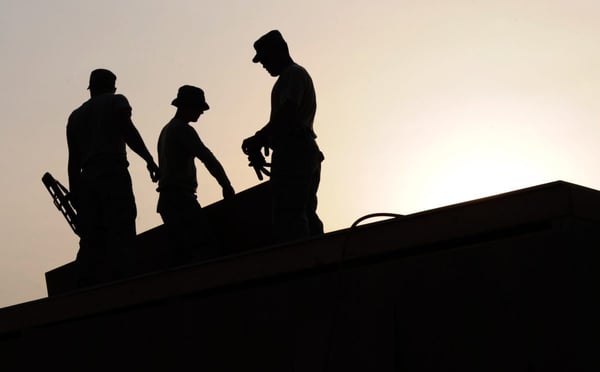There are three categories of wearable technology in construction: Tactile, visual and sensing. Tactile and visual wearable technology are both great ways to reduce injuries and accidents, as well as improve efficiency and productivity on the job site. Tactile observes situations on the body of a worker, and visual provides hands-free information without interrupting workflow. Wearable sensing technology works differently, though.
Sensing technology is designed to monitor the biological, environmental and physical conditions of a worker. It studies the data using edge computing and will caution the worker of a dangerous situation, should one arise.
According to Construction Dive, “Sensors come in many forms including badges, actuators, biosensors, gyroscopes and more. They record and evaluate the wearer’s physical condition, location and environment. These wearables can sense location, impact, motion, temperature, vital signs and blood cases and evaluate and interpret the data to provide actionable information.”
Actionable information means that the worker can take direct action with the information he or she is given in the event of a potential hazardous situation that can lead to injury. This information leads to reduced accidents, reduced injuries and increased efficiency and productivity. All of which translates into higher profit margins.
Sensing wearable technology can be housed or deployed in a variety of ways. The number of options for wearing these sensors makes having them simple and unrestrictive. They can be attached to hardhats, safety glasses or personal protective equipment. There are clip-on wearables that can attach to shirts, vests and belts. The edge computers needed to secure the data can be attached to wrist bands or any of the clip-on devices mentioned above. Sensors can even be placed in the sole of a shoe.
The CDC posted an article based on a study in November 2019. The article states, in part, “Additionally, active monitoring of physiological data with wearable technologies may allow for the measurement of heart rate, breathing rate, and posture [Nath et al 2017]. This type of real-time information can help workers actively monitor their bodies’ response to the work environment and its demands.”
Aside from the added worksite safety benefits provided by wearable sensing technology, it also gives the worker valuable insight to how his or her body is reacting to the environmental conditions. As humans become increasingly self-aware and understand more of how the body works and what it needs, this type of information is increasingly valuable. If someone who is otherwise healthy has an adverse reaction to something on a jobsite, sensing technology has the capability to warn the worker prior to the reaction becoming a serious problem. Heart rate changes, blood pressure, oxygen saturation, respiratory rate and other vital signs can be indicators of a medical problem. Catching something like that before a worker falls from height could save a life.
Wearable sensing technology is likely to be employed by many construction firms going forward. It’s still relatively new, so cost can be a challenge for smaller operations. But it will become increasingly common because its benefits are too great to ignore. More research is being done on wearable technology overall, sensing included, and early reports indicate that it all yields positive change in the construction industry.

Recent Posts
- Spec Home Loans: Complete Guide to Construction Financing for Builders
- Spec Construction Loans: A Spec Line of Credit Is Worth the Paperwork
- Spec Homes and Pre-Sale Homes: Relative Benefits for a Spec Builder
- Spec Construction Success: Insights for the Investor Builder
- How Is a Spec House Different From Other Kinds of House Construction?
